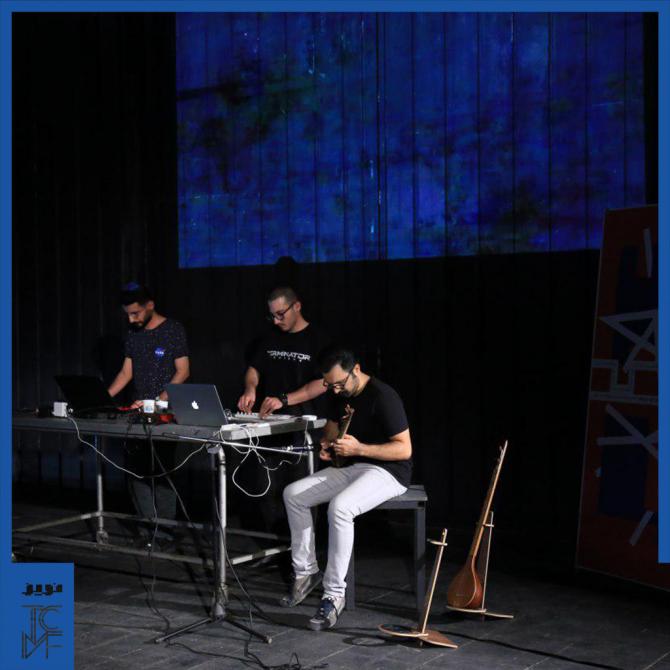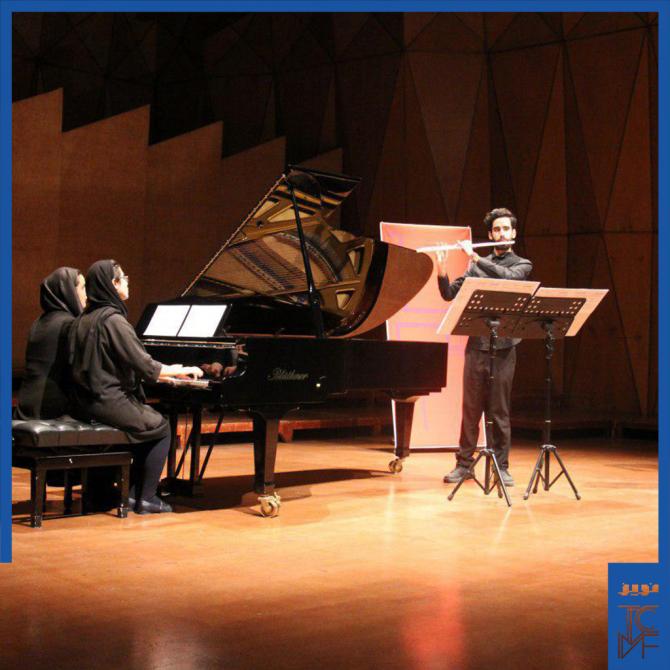پروژهی ردیف، نام رپرتواری بود برای سهتار و صداهای الکترونیک به آهنگسازی آنسامبل سه نفرهی الکنویز که در جشنوارهی موسیقی معاصر تهران توسط همین آنسامبل اجرا شد. این پروژه، چنانکه از ناماش برمیآمد، تلاشی بود برای برهمنشینی ردیف و موسیقی الکترونیک. طبیعتاً در چنین اجرایی، گشودن راهها، ظرفیتها و معانی نو برای موسیقی ردیف یا موسیقی الکترونیک در بستر نوی تعاملیشان اهمیت بهسزایی دارد. میزبانی که سخت امروزی به نظر میرسد، پذیرای نمایندهی موسیقایی فرهنگ نامدرن شهری در کشوری شرقی میشود.
آنچه اجرا شد، به زبان ساده، همین و فقط همین بود: اشارههایی محدود (نه تغییر شکلیافته، نه نوآورانه و نه مفسرانه) در حد یکدو موتیف به درآمد شور، سپس اجرای تقریباً عین به عین زیرکش سلمک، محو شدن بقایای این گوشه در صدایی نوفهوار، رفتن به اوج شور، تأکید بر شاهد دشتی، و بالاخره به انجام رساندن کار با اجرای بخشی از رنگ شهرآشوب. در حقیقت برنامه با درآمد آغاز شد و با رِنگ خاتمه یافت. چنین رپرتواری حتا در یک اجرای مکتبی ردیف هم محافظهکارانه به نظر میرسد؛ چه برسد در برنامهای که نام «موسیقی تجربی» بر خود دارد.
علاوه بر این، نسبتی معنادار میان نواختههای سهتار و اصوات الکترونیک پسزمینهی آن وجود نداشت. موسیقی ساده شدهی ردیفی چون مادهی خامی از جایی دیگر جاکن شده و با غریبگی محض روی صداهای الکترونیک و چند تصویر –که کمی یادآور اجراهای سایکدلیک بودند- سوار شده بود. صداهای الکترونیک پسزمینهای هم چنین وجه تمایزی نداشتند؛ بیاتفاقی منحصر به فرد آنها به زحمت ارتباطی با شور و دشتی مییافت. محدودیت توان تکنیکی نوازندهی سهتار نیز به یاری این بلبشو آمده بود: حتا همین برنامهی ساده شده و پیش پا افتاده نیز از ضعف نوازندگی رنج میبرد.
همهی اینها به کنار، شرایط سولهی کارگاه دکور حافظ هم برای اجرای موسیقی بسیار نامناسب بود: صدای ماشینهای خیابان حافظ و کولر بزرگ سالن تبدیل به بخشی از اجرا شده بودند، و به واسطهی صدابرداری نامناسب سالن، صدای سهتار به سختی به گوش میرسید.
Dislocation
On Eleknoise ensemble at Tehran Contemporary Music Festival
by Kamyar Salavati
Radif Project, a repertoire for Setar and electronic sounds, composed by Eleknoise trio ensemble was performed by the same ensemble in Tehran Contemporary Music Festival. This project, as its name indicates, is an attempt for associating between Radif and electronic music. It is obvious that in such a performance, opening new paths, potentials and meanings for Radif music or electronic music in their new interactive context is of substantial importance. A significantly contemporary host has a guest from a non-modern musical culture in an eastern country.
In short, this and only this was the concert: limited references as a couple of motives in Daramad-e Shur, then almost the exact representation of Salmak (without variation, without any innovation or being interpretive), resolving the rest of this Gusheh in a semi-noise sound, moving to Owj in Shur, emphasizing on Shahed of Dashti and at the end closing the piece with a part of Reng-e Sharashoub. In fact, the program began with Daramad and ended with Reng. Such a repertoire would be considered conservative even in a scholastic reading; let alone in a program that carries “experimental music” in its name.
In addition, there was no meaningful relationship between what Setar was performing and the background electronic sounds. Simplified Radif-based music was up rooted from another place as a form of raw material and with complete severance was superimposed on electronic sounds and some pictures which were reminding of psychedelic performances. There was no special identity for the background noise as well. Their exceptional uniformity hardy could establish a sort of relationship with Shur and Dashti. Technical limitations of the Setar player was not helping this mess either. Even this simple and insignificant concert was suffering from inadequate performance skill.
Leaving all these aside, conditions of the venue was extremely unsuitable for music performance: traffic noise from Hafiz street and the hall’s sizable cooler system have become a part of the concert and thanks to poor sound design in the venue, Setar was hardly audible.
This review is written for The Fourth Tehran Contemporary Music Festival. All rights reserved for www.noise.reviews



